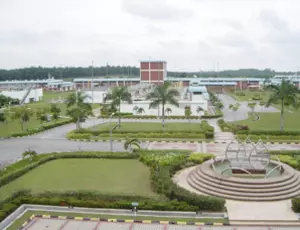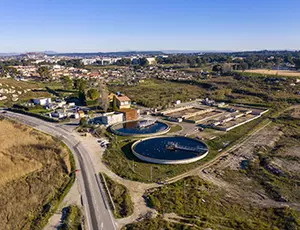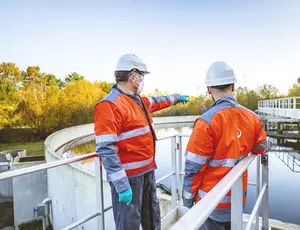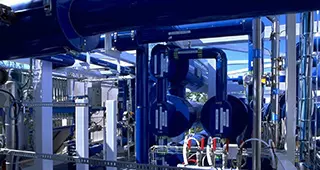Actidyn™ is a lamella sludge thickening system that optimizes the surface area available for sedimentation in the sludge tank.
Overview
Sludge treatment, disposal and digestion must be handled carefully to avert the risk of contamination of surface waters and groundwater from chemicals and nutrients contained in the sludge. Sludge also contains pathogenic organisms and can be a source of odors.
A high water content makes it uneconomical to transport wet sludge to a landfill site so sludge thickening and sludge dewatering, which take place before disposal or further processing, reduce the volume and therefore associated costs while helping to meet regulatory standards for the disposal and/or facilitating reuse.
How it works
Actidyn reduces sludge volume as it flows through successive stages:
- Coagulation — raw water is thoroughly mixed with a coagulant, a chemical used to remove suspended solids from the water in the first stage of sludge treatment.
- Flocculation — a polymer is added to form and develop dense masses of bacteria - also known as flocs - using a dynamic mixer to produce optimum velocity in the sludge settling unit.
- Settling — sludge settles on the floor of the tank or lamella sludge settling unit, and is recovered using a chain or rotary scraper or a sludge hopper before being pumped forward for further treatment.
- Clarification — the water is further purified by a counter-current separation process, then flows out towards a system of launders ensuring an equal flow distribution.
- The sludge bed is homogenized through the slow and regular rotation of a picket fence scraper.

Features and benefits
The Actidyn lamella sludge treatment system is compact and easy to operate. It can deliver high sludge concentrations, significantly reducing the volume of sludge produced.
It has been installed worldwide, across several sectors including the food and beverage, mining, municipal, oil and gas (downstream) and pulp and paper markets. The system has a solid loading rate of 250 to 1,500 kilograms per square meter per day (kg/m².d) and has been deployed on flows ranging from 14 to 5,000 cubic meters per hour (m3/h).
Operators can expect a more than 20-year return of experience on installations.
Applications
The Actidyn lamella sludge treatment system can be used in a range of applications at clean water and wastewater facilities.
Services
Contact
Sludge thickening is indispensable, delivering economic and operational benefits by effectively managing and preparing sludge for subsequent treatment and disposal. However, I foresee sludge thickening playing an even more pivotal role in wastewater treatment and industrial processes to ensure environmental compliance and meeting increasing environmental and regulatory compliance standards to enable reuse and or recycle.

Xiaohua Chen
Veolia Water Technologies Asia Pacific - Municipal Process Director
Contact Xiaohua throug his LinkedIn account
FAQ about Actidyn
What is the difference between sludge and sewage?
Sludge is the term for solids that have been separated from suspension in a liquid, whereas sewage is a suspension of water and solid waste. Sludge contains water, dissolved organic and inorganic materials and suspended solids. The suspended solids normally make up 100 to 350 mg/l of municipal wastewater.
What is sludge thickening?
Different approaches can be used in sludge thickening, including:
- Allowing the particles to settle at the base of a vessel.
- Encouraging particles to migrate to the sides of a rotating container using centrifugal force.
- Encouraging neutrally buoyant particles to float to the surface of the sludge for removal by skimming or dissolved air flotation.
- Letting liquid drain away under gravity, through a permeable medium on which the sludge sits or comes into contact, such as a gravity belt, or rotary drum thickener.
These sludge thickening processes are relatively low in energy consumption and generate sludges of 4 to 6% dry solids (DS) content. They are widely employed to reduce sludge volume upstream of anaerobic digestion.
What is the lamella sludge thickening process?
Lamella sludge thickening is a settling process that expands the surface area available for sedimentation in the settling tank by using layers of plates to separate sludge and water. To ensure the sludge is separated out by gravity, the lamella plates are tilted at an angle to retain the solids and keep them from reentering the liquid flow.
What is the difference between sludge thickening and dewatering?
Sludge thickening aims to separate the solid and liquid components of the sludge, then sludge dewatering reduces the liquid content.
What is the difference between a sludge thickener and a clarifier?
Sludge thickeners and clarifiers are both used to separate liquids and solids by settling. Thickeners are used to concentrate solids, while clarifiers are used to purify liquids.









